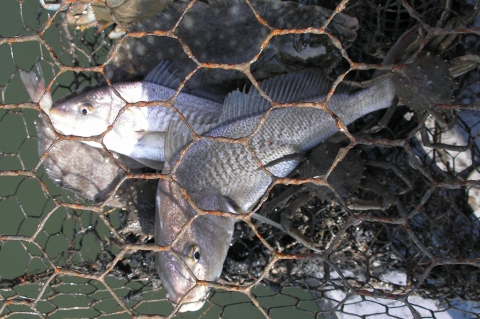What We Know About "Ghost Fishing"
APRIL 3, 2015--The NOAA Marine Debris Program, in partnership with the National Centers for Coastal Ocean Science, published a report recently that assesses the current state of science on “ghost fishing” and the derelict fishing gear that causes it.
Ghost fishing occurs when lost or discarded fishing gear that is no longer under a fisherman’s control continues to trap and kill fish, crustaceans, marine mammals, sea turtles, and seabirds. Derelict fishing nets and traps can continue to ghost fish for years once they are lost under the water’s surface.
Ghost fishing can impose a variety of harmful impacts, including: killing target and non-target organisms, including endangered and protected species; causing damage to underwater habitats, such as coral reefs and benthic fauna; economic losses from target species mortalities and replacement costs; and contributing to marine pollution.
The report examines existing scientific literature to determine what we know about these impacts, as well as gaps in knowledge and suggestions for prevention and mitigation.
It is the third in a series of scientific assessments on marine debris topics. For more information and to download the report, visit the NOAA Marine Debris Program online.
For further information, contact Asma.Mahdi@noaa.gov.
Go back to OR&R Weekly Report.

